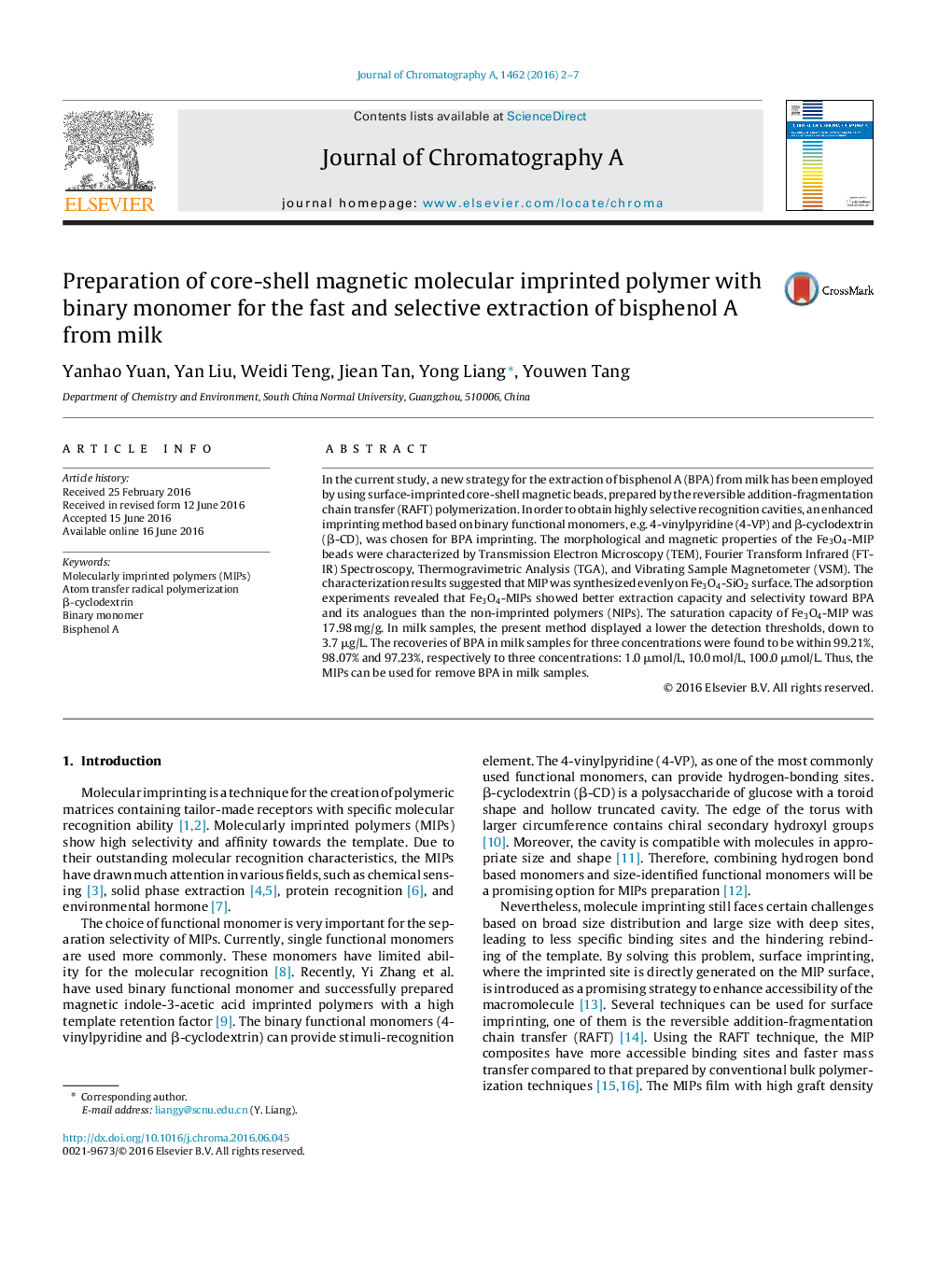| Article ID | Journal | Published Year | Pages | File Type |
|---|---|---|---|---|
| 1198613 | Journal of Chromatography A | 2016 | 6 Pages |
•An enhanced imprinting method based on binary functional monomers was chosen for BPA imprinting.•The magnetic MIPs nano materials were synthesized by using surface-imprinted core-shell magnetic beads.•The magnetic MIPs showed better extraction capacity and good selectivity than that of NIPs for bisphenol A.•We were developed a method for the determination of bisphenol A in milk samples by magnetic MIPs extraction couple with HPLC.
In the current study, a new strategy for the extraction of bisphenol A (BPA) from milk has been employed by using surface-imprinted core-shell magnetic beads, prepared by the reversible addition-fragmentation chain transfer (RAFT) polymerization. In order to obtain highly selective recognition cavities, an enhanced imprinting method based on binary functional monomers, e.g. 4-vinylpyridine (4-VP) and β-cyclodextrin (β-CD), was chosen for BPA imprinting. The morphological and magnetic properties of the Fe3O4-MIP beads were characterized by Transmission Electron Microscopy (TEM), Fourier Transform Infrared (FT-IR) Spectroscopy, Thermogravimetric Analysis (TGA), and Vibrating Sample Magnetometer (VSM). The characterization results suggested that MIP was synthesized evenly on Fe3O4-SiO2 surface. The adsorption experiments revealed that Fe3O4-MIPs showed better extraction capacity and selectivity toward BPA and its analogues than the non-imprinted polymers (NIPs). The saturation capacity of Fe3O4-MIP was 17.98 mg/g. In milk samples, the present method displayed a lower the detection thresholds, down to 3.7 μg/L. The recoveries of BPA in milk samples for three concentrations were found to be within 99.21%, 98.07% and 97.23%, respectively to three concentrations: 1.0 μmol/L, 10.0 mol/L, 100.0 μmol/L. Thus, the MIPs can be used for remove BPA in milk samples.
